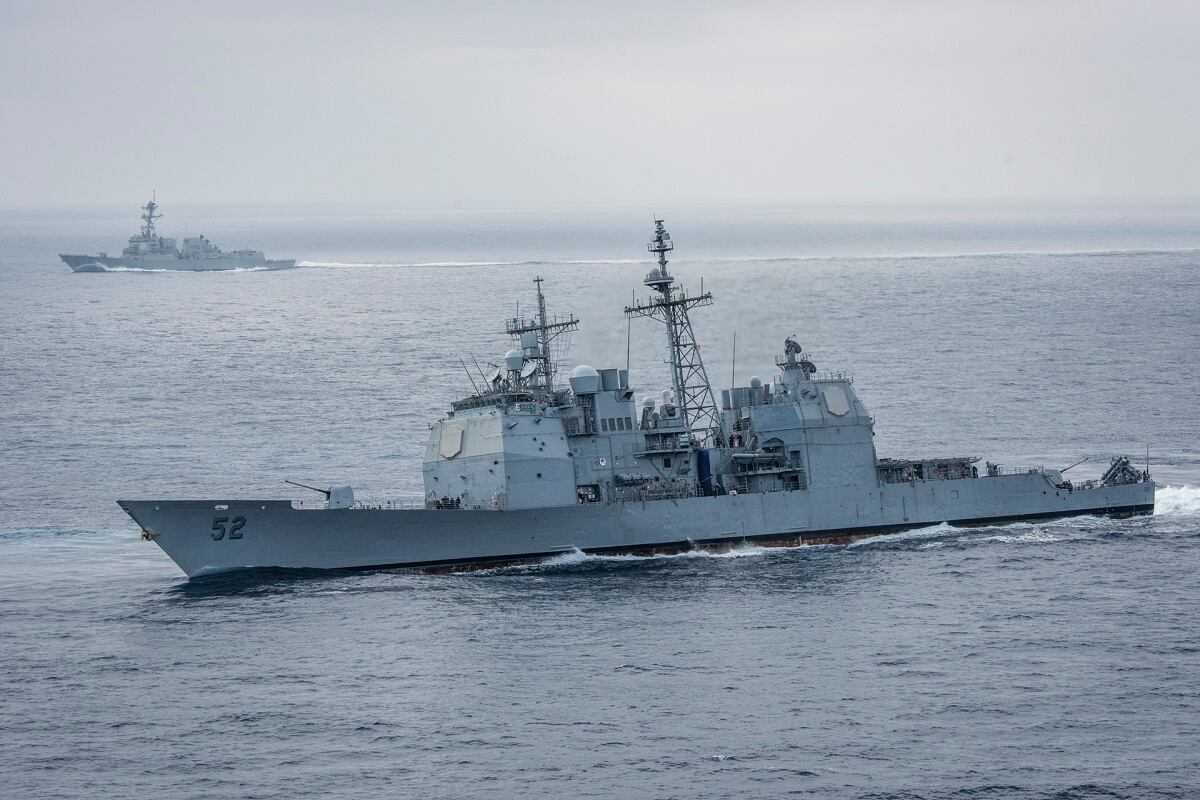WASHINGTON — A three-month internal review conducted by senior U.S. surface fleet leaders found some or significant concerns with the ship-handling skills of nearly 85 percent of its junior officers, and that many struggled to react decisively to extricate their ship from danger when there was an immediate risk of collision, according to an internal message obtained by Defense News.
Led by the Surface Warfare Officer School, officer of the deck competency checks were conducted on a random selection of OOD-qualified first-tour division officers (the newest officers in the fleet) in underway bridge navigation simulators fleet-wide between January and March. Of the 164 officers who were evaluated, only 27 passed with “no concerns.” Another 108 completed with “some concerns,” and 29 had “significant concerns,” according to the message, which was released by the Navy’s top surface warfare officer Vice Adm. Richard Brown.
Brown, who leads Naval Surface Force Pacific, termed the results “sobering.”
The evaluations raise distressing questions about the level of ship-handling training junior officers get both prior to their arrival at their first command and when they arrive. In a Tuesday interview with Defense News at the Pentagon, Brown said the checks would be used to inform new training in development for young officers and that changes were already underway that show the Navy is serious about self-assessment and improvement in the wake of the twin disasters that claimed the lives of 17 sailors last summer.
Among the shortfalls identified in the checks:
- Officers struggled with operating radars and the associated tools at hand, an issue that emerged in the wake of the Fitzgerald accident.
- Officers had a firm grasp of the international rules of the road for navigating ships at sea, but struggled to apply them practically during watch standing, especially in low-visibility situations.
- Most officers were able to keep clear of close encounters with other ships in the simulator but those that found themselves in extremis “were often ill-equipped to take immediate action to avoid collisions” — a factor that was a direct contributor to the loss of life in both the John S. McCain and Fitzgerald collisions in 2017.
In his message to the fleet, Brown said the OOD competency reviews should be a call to action for the surface community to get after its shortcomings.
“While the OOD competency checks were a snapshot in time, we must be realistic in confronting the systemic shortfalls that they revealed in core proficiencies across the junior qualified members of the force,” Brown said in the message. “We as a community can and must tackle our deficiencies and ensure there is meaningful experience behind our qualification letters.”
RELATED

The areas of concern listed in the message conjure unsettling reminders of the 2017 accidents. In the case of McCain, confusion and indecision took hold on the bridge at the precise moment when the ship had to take immediate actions to avoid a collision, despite the presence of the commanding officer.
In response to the evaluations, Brown directed that the Navy’s Norfolk-based Navigation, Seamanship, and Shiphandling Trainer gin up and distribute “a series of 'Extremis Extraction' scenarios that show significant promise in helping to reduce or eliminate the decision paralysis that Junior Officers demonstrated during the scenario.”
Brown directed that his ships run the scenarios regularly in the trainers.
In the case of Fitzgerald, both the bridge and the combat information center showed a lack of basic understanding of the radar they were using and failed to use the tools at hand effectively. As a result, the surface fleet increased radar training at its nine-week basic division officer course from two hours to 11 hours, the message said.
While the increases have shown promise, the fleet intends to add training to the advanced division officer course prior to a junior officer’s second DIVO tour, and in the long term the fleet intends to add two weeks of Coast Guard certified radar training into a new officer of the deck training course in development.
RELATED

Bell curve
Brown told Defense News that the evaluations were done as part of an effort to see what the most immediate needs were as the surface fleet sets out make changes to how it trains its junior officers.
“We wanted to very quickly establish what was the baseline, so it was a random sampling of 164 first-tour division officers who had a wide range of experience,” Brown said.
Some of the officers had only been given their officer-of-the-deck qualifying letter a few weeks prior to the evaluation and some had been through a deployment’s worth of bridge watch, Brown said. What the tests showed was that the junior officer community falls into a pattern familiar to any large organization: a few hot runners, a few poor performers, and a whole lot of average.
“So out of 164 what we ended up seeing was kind of what we expected: We got a bell curve distribution. We had 27 who were on top, we had 108 who were in the middle and we had 29 who were kind of at the lower end,” he said.
The data from the evaluations was going to be used to develop a junior officer of the deck pilot course that will launch in May 2019, and will be followed by a re-evaluation of those graduates a year later.
“We want to make sure the changes we are making are actually having an impact in the fleet and if we are increasing the level of experience and performance. ... We want to move that bell curve to the right.” he said.
In both the near and long term the surface fleet is investing heavily in improvements to shore-side simulators and trainers, new assessment teams, increased sea time for all junior officers and more emphasis on bridge watch team management skills as well as new courses of instruction for junior officers, initiatives that Brown said in the message he believes will yield improvements.
Brown closed the message by saying he had confidence the current and future crop of junior officers was up to the task.
“I have every confidence in our current generation of Junior Officers,” he said. “We owe them the training and tools necessary to become expert Mariners. Together, we will get there.”
David B. Larter was the naval warfare reporter for Defense News.








